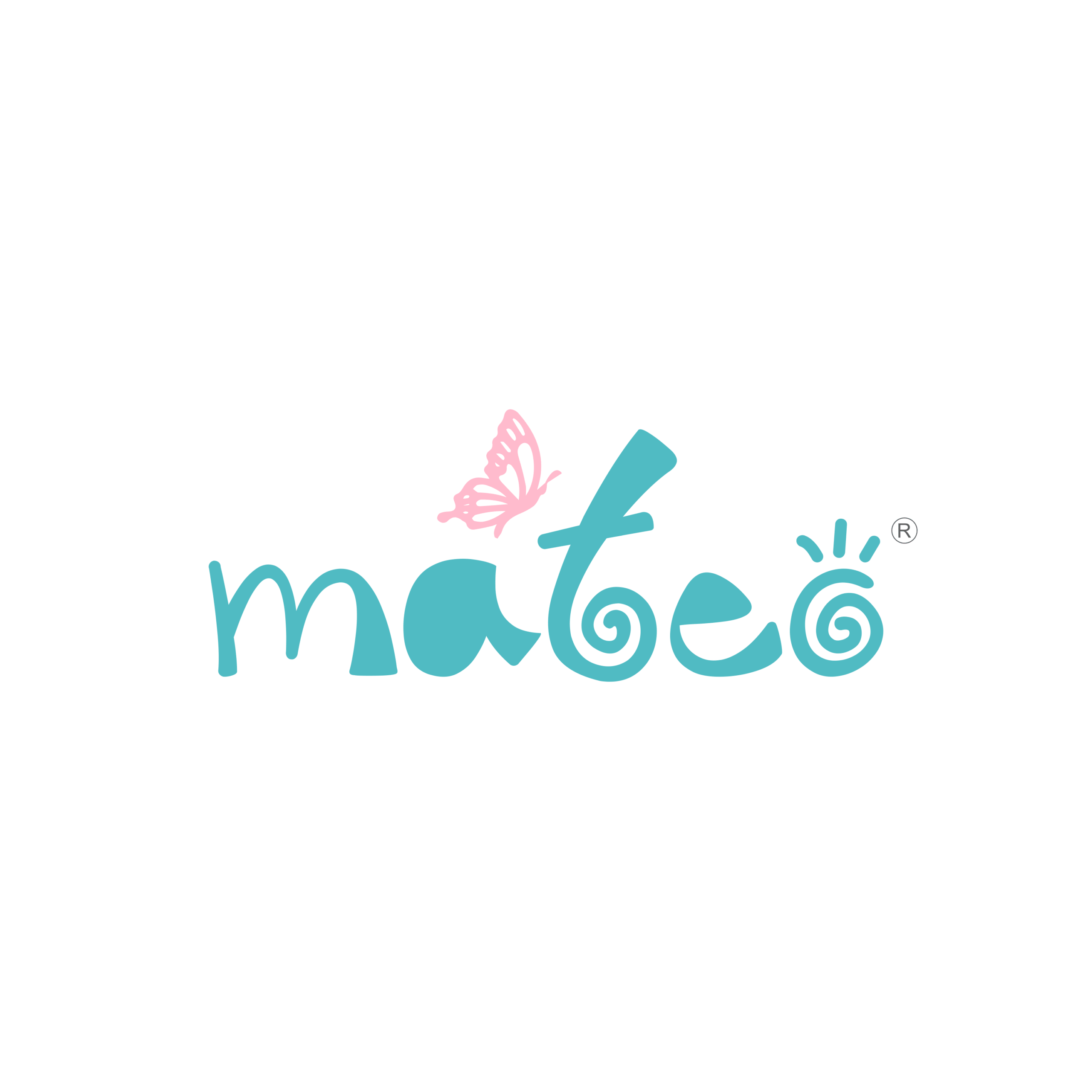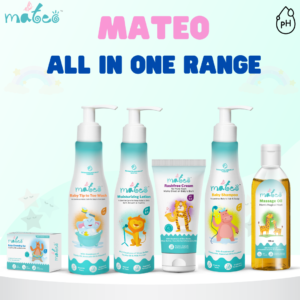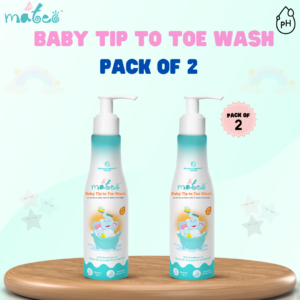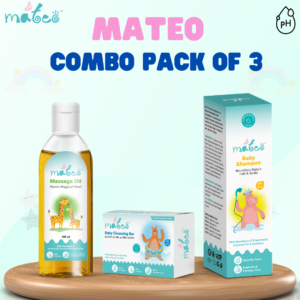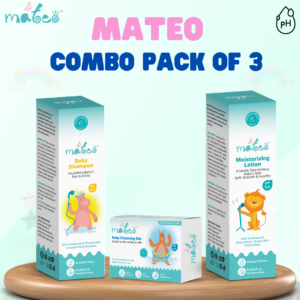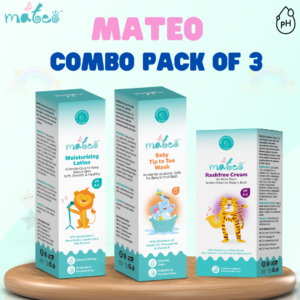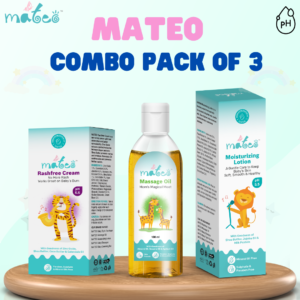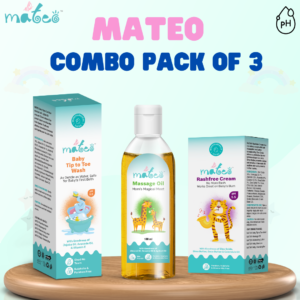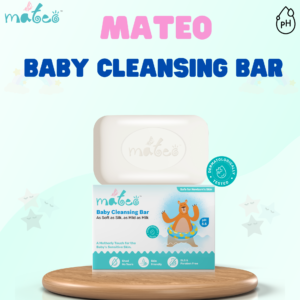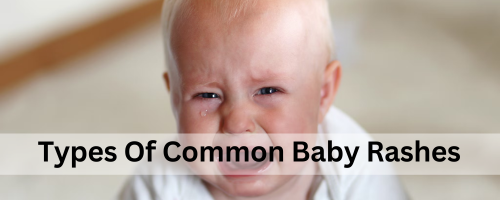
Types Of Common Baby Rashes | Eliminate Your Baby Rashes With Tender Care
Table Of Content
- Is Baby Rash Normal?
- What Causes Rashes in Babies?
- What are The Common Types of Baby Rashes?
- Baby Bum Rash Remedies
- Why Does My Baby Have a Rash on His Bum?
- How Do I Know If My Baby’s Rash Is Serious?
- How Is Baby Bum Rash Treatment Performed?
- Conclusion
When caring for your precious little one, their delicate skin requires special attention and care. Are you worrying about diaper allergy in babies?
Baby rashes due to diaper can be a common concern for parents, causing discomfort for both the baby and their caregivers. You can effectively address and eliminate those bothersome rashes with tender care and a proactive approach.
In this article, we will explore some practical tips and gentle remedies to help you soothe and heal your baby’s skin, restoring their comfort and bringing peace of mind to you.
Is Baby Rash Normal?
Yes, baby rashes on body are common and considered a regular occurrence. Many babies experience rashes at some point during their early years.
What Causes Rashes in Babies?
Rashes can be caused by various factors, such as,
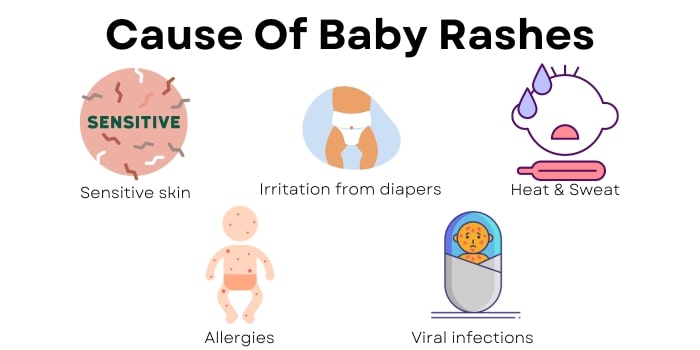
- Sensitive skin
- Irritation from diapers
- Heat and sweat
- Allergies
- Viral infections.
Most baby rashes are not serious and can be easily treated with gentle care and home remedies. Nevertheless, if you have concerns about your baby’s rash or if it persists or worsens, it is always advisable to seek guidance from a healthcare professional.
What are The Common Types of Baby Rashes?
Before delving into the solutions, it’s crucial to identify the common baby rashes on belly or bum. These may include
- Baby diaper rash: This bacterial diaper rash develops in the diaper region and is typically brought on by friction, irritation, or extended contact to wetness. Mild redness to elevated, swollen spots are all possible.
- Baby Heat rash: Small red bumps or blisters called baby heat rash, often known as prickly heat, appear when sweat ducts get blocked. The neck, armpits, or diaper region are frequent locations where it manifests itself since the baby’s skin is covered or more likely to rub against these places.
- Eczema: Eczema, sometimes referred to as atopic dermatitis, results in dry, red, and itchy skin areas. It may be brought on by a number of things, including allergies, irritants, or heredity.
- Cradle cap: Scaly, yellowish, or crusty spots on the baby’s head are signs of the common condition known as cradle cap. Usually not itchy or irritating, it usually goes away on its own with time.
- Allergic rashes: A sensitivity to specific chemicals, such as soaps, detergents, textiles, or certain foods, can result in contact dermatitis, an allergic reaction or irritant. Redness, itching, and even blisters are the usual side effects.
- Viral rashes in babies: Rashes in newborns can be brought on by viruses like chicken pox, measles, or roseola. Symptoms like fever or respiratory issues are frequently present along with these rashes.
Baby Bum Rash Remedies
Keep It Clean and Dry
Maintaining proper hygiene is essential in preventing and healing baby rashes. Regularly change diapers, cleanse the affected areas with mild, fragrance-free baby wipes, and ensure thorough drying before putting on a fresh diaper. It helps to minimise wetness and bacteria build-up, reducing the risk of diaper rash.
Gentle Skincare Products
Use gentle and hypoallergenic skincare products specifically formulated for babies. Mild, fragrance-free cleansers, moisturisers, and baby bum rash cream can relieve and nourish your baby’s sensitive skin. Avoid products containing harsh chemicals, dyes, or fragrances that may further irritate the skin.
Comfortable Clothing Choices
Dress your baby in loose-fitting, breathable clothing made from soft fabrics like cotton. It allows their skin to breathe and reduces friction that can worsen rashes. Avoid tight or synthetic materials that can trap heat and moisture, exacerbating the rash.
Home Remedies For Baby Rash On body
Several home remedies for a baby rash on the body can effectively treat and soothe baby rashes. Applying aloe vera gel, coconut oil, or a gentle chamomile-infused compress can also relieve irritated skin.
Seek Professional Advice
If home remedies and gentle care measures do not bring relief, it’s important to consult a paediatrician or dermatologist. They can assess the rash, diagnose it properly, and recommend specific treatments, including medicated rashfree cream or ointments if necessary.
Why Does My Baby Have a Rash on His Bum?
A rash on a baby’s bum is commonly known as diaper rash, especially newborn baby rash on bum is common. It occurs due to various factors, including prolonged exposure to wetness, friction from diapers, and irritation from stool or urine.
Moisture and warmth create an ideal environment for bacteria and yeast to thrive, leading to inflammation and redness. Using safe soap for babies, wipes, or detergents can also contribute to diaper rash.
Additionally, introducing new foods or changes in diet can result in acidic stools, further irritating the baby’s delicate skin. Proper diaper hygiene, frequent changes, gentle cleansing, and the use of baby bum diaper rash cream or ointments can help prevent and soothe diaper rash.
How Do I Know If My Baby’s Rash Is Serious?
It is important to monitor your baby’s rash and be aware of any concerning signs that may indicate a more serious condition.
If your baby has a severe diaper rash accompanied by baby rashes on the body, high fever, extreme discomfort, spreading redness, blisters, or pus-filled sores, or if your baby appears ill or experiences difficulty breathing, it is a must to seek immediate medical attention.
Additionally, if the rash does not improve with home remedies within a few days or worsens, it is recommended to consult a paediatrician for proper evaluation and guidance.
How Is Baby Bum Rash Treatment Performed?
Baby skin rashes treatment can be done performed in the following steps:
- Change diapers frequently and clean the area gently with warm water or mild baby wipes.
- Pat the baby’s bum to dry or let it air dry before putting on a fresh diaper.
- Apply a good amount of diaper rash cream to protect the skin and create a barrier against moisture and irritants.
- Give your baby some diaper-free time to allow the skin to breathe and heal. Lay a waterproof pad or towel underneath for easy cleanup.
- Avoid using scented wipes, soaps, or lotions that may further irritate the skin.
- Use mild, fragrance-free products specifically designed for babies.
- Avoid rubbing or scrubbing the affected area vigorously. Instead, pat or dab gently when cleaning or applying creams to avoid further irritation.
Remember, if the rash worsens, becomes accompanied by other concerning symptoms, or does not improve with home care, consult a paediatrician for proper evaluation and guidance.
Mateo rash-free cream is a non-sticky product that absorbs quickly and spreads more easily. Zinc oxide in the rash-free cream is the protective barrier between the skin and the diaper . Rashes and irritation are avoided by using shea butter as a moisturizer. Calendula oil calms the skin and stops new rashes from forming.
Quick Recall
Your baby’s skin is delicate and requires tender care to prevent and treat rashes effectively. By maintaining proper hygiene, using gentle skin care products, dressing your baby in comfortable clothing, and utilising natural remedies, you can help alleviate and eliminate those troublesome rashes.
Remember, if the rash persists or worsens, seek professional guidance. With your nurturing care and proactive approach, you can restore your baby’s skin health, providing them with the comfort and relief they deserve.

Nivethitha Sridharan
Nivethitha is a mother of two children and has a great interest in writing as an experienced mother. She publishes educational and interesting articles on baby care and also assists parents in selecting the finest baby products for their baby’s skin and well-being. She focuses on infant skin care and health issues. She also provides suggestions and guidance on baby care and avoids common skin disorders in newborns. Nivethitha likes studying and writing about new and innovative ideas that might assist people in finding solutions to their problems. She feels that content writing is an effective means of communicating thoughts and information to the world.
-
Mateo All in One Pack
₹1,700.00Add to cart -
Mateo Baby Body Wash – 200 ml (Pack of 2)
₹790.00Add to cart -
Mateo Baby Care Collection – Mateo Baby Massage Oil(100ml), Mateo Baby cleansing bar(75gm), Mateo Baby Shampoo(200ml)
₹775.00Add to cart -
Mateo Baby Care Collection – Mateo Baby Moisturizing Lotion(200ml), Baby Cleansing Bar(75gm), Baby Shampoo(200ml)
₹930.00Add to cart -
Mateo Baby Care Collection – Mateo Baby Moisturizing Lotion(200ml), Mateo Baby Body Wash(200ml), and Mateo Baby Rashfree Cream(60gm)
₹925.00Add to cart -
Mateo Baby Care Collection – Mateo Moisturising Lotion(200ml)+ Mateo Baby Rashfree Cream(60g) + Mateo Baby Massage Oil(100ml)
₹725.00Add to cart -
Mateo Baby Care Collection-Mateo Baby Body Wash(2ooml), Baby Rashfree Cream(60gm), Baby Massage Oil(100ml)
₹770.00Add to cart -
Mateo Baby Care Collection-Mateo baby moisturizing lotion(200ml), Baby cleansing bar(75gm), Baby massage Oil(100ml)
₹730.00Add to cart
